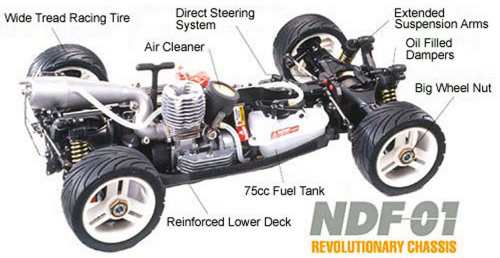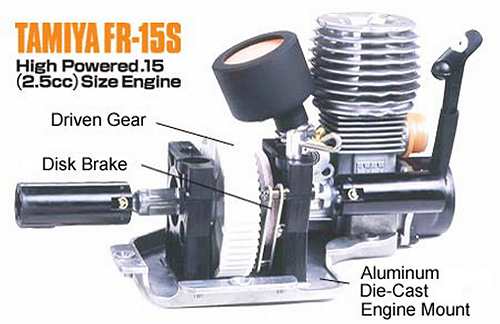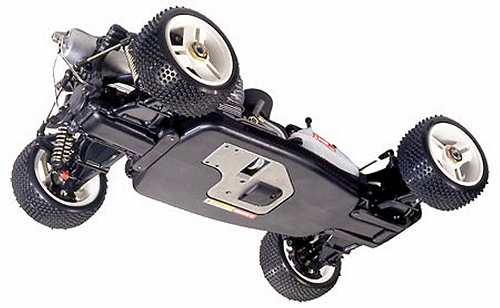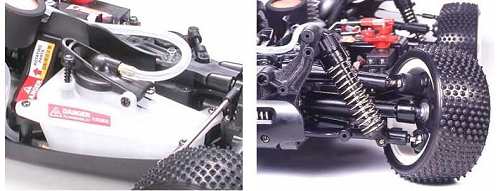

|
|
|


|
Tamiya Nitro Force - 44044 (Radio Controlled Model Review)1/10 Scale Nitro Buggy: NDF-01 Chassis
Released by Tamiya in December 2004, the 4WD Nitro Force - # 44044 - is No.44 in the Glow-Engine RC Car Series and was based on the NDF-01 chassis with an FR-15S engine.
▼ Scroll Down for More Images ▼
Rating: 4
|








|
|
|

|




Buying a Used Tamiya Nitro Force Buggy (and What to look for)
Make a General Visual Inspection
Check the Body-Shell
If the body shell of your Tamiya Nitro Force is broken, ripped or damaged in any way, this can be easily repaired with rubber solution glue. Also, for added protection and if available for your Nitro Force model, fit an under guard to stop dirt and gravel entering the chassis. Drive Shafts and Turnbuckles
Examine the Drive System
The gearbox of your used Buggy should be opened up to check for gear wear and lubrication. A thin coat of grease is often used on internal gears and although this is fine for basic running around on the back yard, if you intend to race your Buggy at a higher level, this should be removed and replaced with racing oil (ZX1 or Teflon Oil). Of course, this should be reapplied after each race meeting. Pinions and Spur Gears
Don't Neglect the Ball-Joints
Ball joints always cause problems. For top level Nitro Buggy racing, the plastic ball connectors should be checked and if deemed necessary changed after every meeting. A simple thing like a loose fitting connector popping off could easily end your race, so better safe than sorry. Steering Servo and Servo-Saver
Stabilizers
If body roll on your Tamiya Nitro Force is a problem, handling can be improved with the use of stabilizers, anti roll or sway bars, stiffer tuning springs and, or, thicker silicone oil in the dampers. Don't Forget those Bearings
▼ Scroll Down for More Articles and Advice ▼
Or, check out our RC Model Car Setup Guide
|









|






|
|
|
|
Hints, Tips and Information
Shock Mount Settings
The combinations of Shock settings available on the majority of on and off road cars are far too many for this article to cover, so I will endeavour to explain some of the basics, that should give you some idea what these changes might achieve. Some of the settings suggested may not be available on all RC model cars. |
|
Hints, Tips and Information
Rubber Tires for RC Models
Rubber Tires ALWAYS should have either soft sponge or rubber inserts. They will not function as they should without them. And if you are totally serious about your racing they should be glued to the rims. How to Mount Rubber Tires onto Wheels/Rims.
Before mounting your Tires, I would recommend talking to the more experienced racers at your local club, concerning what inserts they use. Even the top level racers rely on a bit of local knowledge on tracks they have never raced before. |
|
RC Models:
|
Radio & Motors: |
Other
Accessories: |